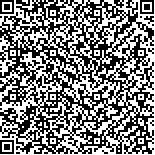张慧萍,洪珊珊,孔玉,等.高频重复经颅磁刺激治疗药物过度使用性头痛的疗效观察[J].中华物理医学与康复杂志,2025,47(9):841-846
扫码阅读全文

|
| 高频重复经颅磁刺激治疗药物过度使用性头痛的疗效观察 |
|
| |
| DOI:10.3760/cma.j.cn421666-20240306-00167 |
| 中文关键词: 药物过度使用性头痛 重复经颅磁刺激 认知功能 焦虑 抑郁 睡眠 |
| 英文关键词: Medication overuse Headache Transcranial magnetic stimulation Cognition Depression Anxiety Sleep |
| 基金项目:南通大学临床医学专项项目(2019LY021);江阴市科技创新项目(JY0603A011014220061PB) |
|
| 摘要点击次数: 505 |
| 全文下载次数: 371 |
| 中文摘要: |
| 目的 观察高频重复经颅磁刺激(rTMS)对药物过度使用性头痛(MOH)的疗效。 方法 募集MOH患者57例,按随机数字表法分为对照组29例和rTMS组28例。2组患者均停用止痛药,并给予口服托吡酯和曲唑酮,rTMS组在此基础上增加rTMS治疗,对照组则给予假rTMS刺激。rTMS治疗每日治疗1次,每次治疗20 min,每周治疗5 d,连续治疗8周。于治疗前和rTMS治疗结束1个月后(治疗后)采用视觉模拟评分(VAS)、头痛失能程度问卷(MIDAS)、汉密顿抑郁量表(HAMD)、汉密顿焦虑量表(HAMA)、蒙特利尔认知评估量表(MoCA)和匹兹堡睡眠质量指数(PSQI)分别评估2组患者的头痛程度、失能程度、抑郁状态、焦虑状态、认知功能和睡眠质量,同时对2组患者进行听觉事件相关电位P300检测。 结果 治疗后,rTMS组和对照组的VAS、MIDAS、HAMD、HAMA和PSQI评分较组内治疗前均显著下降,差异均有统计学意义(P<0.05),rTMS组的HAMD、HAMA和PSQI评分与对照组治疗后比较,差异均有统计学意义(P<0.05)。治疗后,rTMS组的MoCA评分较组内治疗前显著改善(P<0.05)。治疗后,rTMS组听觉事件相关电位P300的潜伏期和波幅分别为(368.25±9.25)ms和(6.62±1.40)μV,较组内治疗前和对照组治疗后均显著改善,差异均有统计学意义(P<0.05)。 结论 在口服托吡酯和曲唑酮的基础上增加高频rTMS,可更为显著地减轻MOH患者的焦虑和抑郁情绪,改善其睡眠质量和事件相关电位P300的潜伏期和波幅。 |
| 英文摘要: |
| Objective To observe any therapeutic effect of repeated high-frequency transcranial magnetic stimulation (rTMS) on patients with medication overuse headache (MOH). Methods Fifty-seven persons with MOH were divided at random into a control group of 29 cases and an rTMS group of 28 cases. Both groups of patients stopped taking analgesics and were treated with topiramate and trazodone. The rTMS group received an additional 20 minutes of rTMS treatment daily, 5 days a week for 8 consecutive weeks. The control group received sham stimulation. Before and after the treatment, both groups′ headache symptoms, disability, depression, anxiety, cognition and sleep quality were evaluated using a visual analog scale (VAS) for pain, a migraine disability assessment scale (MIDAS), the Montreal cognitive assessment (MoCA), the Hamilton depression scale (HAMD), the Hamilton anxiety scale (HAMA) and the Pittsburgh sleep quality index (PSQI). Auditory event-related potential P300 was also measured for both groups. Results After the treatment, the average VAS, MIDAS, HAMD, HAMA and PSQI scores of both groups had decreased significantly. The HAMD, HAMA and PSQI average scores of the rTMS group were then significantly better than the control group′s averages. The average MoCA score of the rTMS group had also improved significantly. The average latency of the auditory event-related potential P300 in the rTMS group was then (368.25±9.25)ms and its amplitude was (6.62±1.40)μV, showing significant improvement compared to before the treatment and compared with the control group. Conclusions On the basis of oral administration of topiramate and trazodone, additional high-frequency rTMS treatment can significantly alleviate anxiety and depression in MOH patients, and improve their sleep quality and the latency and amplitude of event-related potential P300. |
|
查看全文
查看/发表评论 下载PDF阅读器 |
| 关闭 |
|
|
|